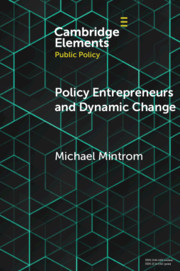Element contents
Policy Entrepreneurs and Dynamic Change
Published online by Cambridge University Press: 25 October 2019
Summary
- Type
- Element
- Information
- Series: Elements in Public PolicyOnline ISBN: 9781108605946Publisher: Cambridge University PressPrint publication: 07 November 2019



